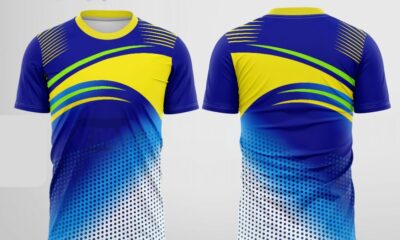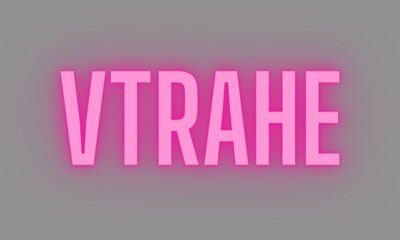Topic
Are Blasphemous Thoughts Unforgivable?

Blasphemous thoughts can often feel like a storm brewing in the mind—uninvited, unsettling, and hard to shake off. Many people grapple with feelings of guilt or shame when these thoughts arise. They wonder if such fleeting notions could somehow tarnish their faith or lead them down an unforgivable path.
Religion has long navigated complex emotions and beliefs, but what happens when our minds wander into territories that challenge established doctrines? Are these moments of doubt truly sinful? Or are they just part of the human experience?
Join us on a journey through the intricate topics of blasphemy, mental health, and forgiveness as we explore whether those nagging thoughts really hold any power over our lives—or if it’s time to redefine what it means to seek peace within ourselves.
Defining Blasphemy and Its Historical Context
Blasphemy is often described as the act of showing disrespect or contempt for sacred beliefs. This definition, however, varies widely across cultures and religions. What one faith might consider a grave offense, another may view with indifference.
Historically, blasphemy has sparked fierce debates and even violent repercussions. Ancient texts reveal that societies once imposed harsh penalties on those deemed guilty of offending the divine. From stonings to excommunications, these actions highlight how deeply intertwined religious sentiments are with social order.
In many contexts today, blasphemy laws still exist but face growing scrutiny in light of modern values like freedom of expression. The evolution of this concept reflects shifts in societal norms and attitudes toward belief systems over time.
This historical backdrop shapes our understanding now—where some see mere thoughts as burdensome sins while others dismiss them entirely as fleeting human emotions.
The Relationship Between Religion and Mental Health
Religion can play a complex role in mental health. For many, faith provides comfort and community. It offers a sense of belonging that can be incredibly supportive during times of distress.
However, some individuals experience conflict between their beliefs and their mental state. Guilt or shame related to perceived shortcomings in faith can exacerbate anxiety or depression. This internal struggle often leads to feelings of isolation.
Conversely, religious practices such as prayer and meditation are known to promote mindfulness and emotional well-being. They serve as tools for coping with life’s challenges.
The dual nature of religion means it can both uplift and burden the mind. Understanding this relationship is crucial for those navigating their spiritual paths alongside mental health issues. It encourages dialogue about how belief systems impact personal experiences differently across various communities.
Types of Blasphemous Thoughts
Blasphemous thoughts can manifest in various forms. They often arise unexpectedly, challenging deeply held beliefs. Some individuals may experience doubts about the existence of a higher power or question religious texts.
Others might entertain irreverent ideas related to sacred figures or symbols. These thoughts can feel shocking and contradictory to one’s values.
Then there are intrusive thoughts, which pop up uninvited and can create significant anxiety. Such mental intrusions rarely reflect true beliefs but instead highlight internal conflicts.
Cynicism towards organized religion is another type that many grapple with today. It reflects disillusionment rather than outright disdain for spirituality itself.
Each person’s experience with blasphemy varies widely, influenced by personal context and upbringing. Understanding these distinctions helps demystify feelings of guilt surrounding them.
Religious Teachings on Blasphemy and Forgiveness
Religious teachings on blasphemy and forgiveness vary widely across different faiths. Many traditions emphasize that intent matters more than the thought itself. In Christianity, for instance, Jesus spoke of forgiveness as boundless, suggesting that even those with doubts can find grace.
In Islam, public declarations against God or prophets are viewed seriously. However, the religion also teaches mercy and repentance. The concept of Tawbah emphasizes returning to Allah with sincerity.
Judaism approaches blasphemy within a context of community relationship and respect for God’s name. Those who stray can seek atonement through sincere actions.
Each belief system offers a pathway to reconcile these troubling thoughts through compassion rather than condemnation. Encouraging dialogue about inner struggles fosters understanding in an often rigid landscape of spiritual expectations.
The Psychological Impact of Believing Blasphemous Thoughts are Unforgivable
Believing that blasphemous thoughts are unforgivable can create a heavy emotional burden. Individuals may experience guilt, shame, and anxiety. These feelings often lead to an internal struggle between faith and self-acceptance.
This turmoil can manifest as obsessive thinking or compulsive behaviors aimed at “cleansing” the mind of these thoughts. The fear of divine punishment looms large, creating a cycle of distress that feels inescapable.
Social isolation may also occur, as individuals withdraw from religious communities for fear of judgment. This disconnect can further exacerbate feelings of loneliness and despair.
Moreover, such beliefs can hinder personal growth and spiritual exploration. Instead of fostering a healthy relationship with their faith, individuals become trapped in a rigid mindset filled with negativity.
The journey towards understanding one’s thoughts becomes crucial for mental well-being. Recognizing the difference between fleeting ideas and genuine intentions is essential for healing.
Coping Strategies for those Struggling with Blasphemous Thoughts
Finding peace when blasphemous thoughts arise can feel daunting. It’s essential to recognize that these thoughts don’t define your character or faith.
One effective strategy is mindfulness. Practicing mindfulness allows you to observe your thoughts without judgment, creating distance from them. This can diminish their power over you.
Talking about your feelings with a trusted friend or therapist may also provide clarity. Sharing experiences often helps in understanding that others face similar struggles.
Journaling offers another outlet for expression. Writing down your thoughts can help you process them and reduce anxiety.
Engaging in spiritual practices, such as prayer or meditation, may foster connection and reassurance within your faith community. These rituals can be grounding during turbulent times.
Remember, nurturing self-compassion is vital too. Acknowledge that everyone grapples with difficult emotions at some point in life; it doesn’t make anyone less worthy of love or forgiveness.
Conclusion: Finding Peace and Understanding in the Gray Area of Blasphemy
Navigating the complexities of blasphemous thoughts can feel overwhelming. Many grapple with feelings of guilt or shame, often questioning their faith and personal beliefs.
Yet, it’s crucial to recognize that these thoughts do not define one’s character or spiritual worth. They may arise from a variety of sources—stress, anxiety, or even curiosity about the divine.
Understanding that blasphemy exists in a spectrum helps foster compassion towards oneself. Embracing this gray area allows for exploration rather than condemnation.
Each individual’s journey is unique; self-acceptance plays an integral role in finding peace amidst confusion. It’s essential to communicate openly with trusted individuals who can provide support and understanding without judgment.
By fostering empathy within ourselves and others, we create space for healing and growth. This approach encourages us to live authentically while reconciling our inner conflicts surrounding spirituality and belief systems.
FAQs
- Are blasphemous thoughts a sin?
Blasphemous thoughts can be considered sinful in many religious traditions. However, the interpretation often varies. Some believe that having such thoughts is natural and not inherently sinful if one does not act on them.
- Can blasphemy lead to mental health issues?
Yes, grappling with feelings of guilt or shame related to blasphemy can contribute to anxiety and depression. It’s important for individuals experiencing distress over these thoughts to seek professional help.
- What should I do if I have persistent blasphemous thoughts?
If you find yourself struggling with intrusive thoughts about religion or faith, consider talking to a mental health professional. They can provide strategies and tools tailored to your situation.
- Is there forgiveness for those who think they’ve committed blasphemy?
Many religious teachings emphasize that forgiveness is available for all who genuinely seek it. It’s essential to approach this matter with an open heart and mind, reflecting on personal beliefs.
- How can I cope with guilt from having these thoughts?
Engaging in mindfulness practices, journaling your feelings, or discussing them openly within trusted communities might help alleviate some of the guilt associated with such intrusive ideas.
Navigating the complexities surrounding blasphemy is challenging but understanding its nuances can offer clarity. Finding support systems—whether through professionals or supportive peers—can foster peace amid turmoil, allowing individuals space to explore their beliefs without fear.
Topic
Navigating the Journey of Recovery: The Benefits of Sober Living in Austin, TX

Recovering from addiction is a life-changing journey that requires support, understanding, and a structured environment. One of the most effective ways to transition from treatment back to daily life is through sober living. Sober living homes provide a safe and nurturing space for individuals committed to sobriety while allowing them to regain independence.
The Importance of Sober Living
Sober living homes offer a crucial bridge between inpatient rehabilitation and independent living. They are designed to help individuals maintain their sobriety, develop essential life skills, and reintegrate into society. Residents in sober living environments benefit from a supportive community, accountability, and a structured routine, which are all vital for long-term recovery.
Why Choose Sober Living in Austin, TX?
Austin is not only known for its vibrant music scene and cultural diversity but also for its robust recovery community. With numerous resources and support systems available, choosing sober living in Austin can significantly enhance your recovery journey.
Eudaimonia Homes stands out as an exceptional option for those seeking sober living in Austin. Here’s why:
- Comprehensive Support: At Eudaimonia Homes, residents are not just provided with a place to stay; they also receive holistic support that focuses on mental, emotional, and physical well-being. This includes access to counseling services, group therapy, and life skills training, all designed to promote sustained recovery.
- Strong Community Focus: Community is a cornerstone of recovery, and Eudaimonia Homes fosters a welcoming and inclusive environment. Residents have the opportunity to connect with others who understand their challenges, share experiences, and support one another throughout their journeys.
- Structured Environment: Eudaimonia Homes emphasizes the importance of structure. Residents follow guidelines that help establish routine and accountability, which are essential for rebuilding confidence and self-discipline. From scheduled chores to regular group meetings, the structured environment supports residents in navigating their recovery.
- Beautiful Locations: The facilities at Eudaimonia Homes are thoughtfully designed to provide a tranquil and comfortable living environment. Beautifully furnished homes, outdoor spaces, and common areas encourage relaxation and camaraderie among residents.
- Personalized Aftercare Plans: Recovery doesn’t end when you leave a treatment center; it’s an ongoing process. Eudaimonia Homes works with each resident to develop a personalized aftercare plan that outlines steps to ensure a successful transition back into independent living.
Making the Choice for Recovery
Choosing to enter a sober living home is a significant decision, one that can pave the way for a healthier, more fulfilling life. Eudaimonia Homes in Austin, TX, offers a unique combination of support, community, structure, and aftercare that sets it apart from other sober living options.
If you or a loved one is seeking a supportive and nurturing environment to continue the journey of recovery, consider Eudaimonia Homes. Together, we can transform challenges into opportunities and build a brighter, sober future.
Learn more about our sober living options in Austin by visiting Eudaimonia Homes. Take the first step towards a renewed life today.
Topic
Top Tron Bridges in 2025: Fast, Secure, and Cost-Efficient Solutions for Cross-Chain Transfers

In 2025, the world of cryptocurrency continues to prioritize interoperability, allowing different blockchains to communicate and share value without friction. As users increasingly hold assets across various networks like Ethereum, BNB Smart Chain, Avalanche, and Polygon, there’s a growing demand for tools that can move tokens between them. This has fueled massive growth in cross-chain bridges — and among them, Tron bridges are gaining significant attention.
Tron (TRX) has established itself as one of the most reliable and cost-effective blockchains, particularly for stablecoin transfers. Thanks to its high throughput and low transaction fees, users often prefer to hold and move assets like USDT on Tron. However, for Tron to integrate more fully into the broader DeFi landscape, users need access to reliable, secure, and user-friendly Tron bridge platforms.
Here’s a closer look at the best Tron bridges https://defiway.com/bridges/bridge-usdt-tron-ethereum available in 2025, starting with the ultra-convenient Defiway, and followed by other strong competitors in the cross-chain space.
1. Defiway – The Gateway to Easy Tron Transfers
Kicking off our list is Defiway, a rapidly rising star in the world of cross-chain infrastructure. Defiway is a Tron bridge that puts simplicity first. The platform allows users to move assets like USDT, TRX, ETH, and BNB across multiple chains in just a few steps — all through a clean, user-focused interface.
One of the biggest draws of Defiway is its ability to automatically find the cheapest and fastest bridging route for your transaction. Whether you’re moving stablecoins from Ethereum to Tron or swapping TRX to Avalanche-native assets, Defiway removes the usual confusion and guesswork.
Security-wise, Defiway operates using smart contracts that have been thoroughly audited. The team has also implemented decentralization features to minimize the risks typically associated with bridge platforms. For users who want a safe, straightforward, and cost-effective Tron bridge, Defiway is a fantastic place to start.
2. Multichain – High Volume and Deep Liquidity
Formerly known as Anyswap, Multichain is one of the most trusted names in bridging. Supporting over 60 chains and hundreds of tokens, Multichain is a leader in decentralized interoperability — and yes, that includes solid support for Tron.
Multichain offers fast settlement times and deep liquidity pools, which help ensure that even large transactions move smoothly. The Tron bridge on Multichain enables users to swap USDT, TRX, and other TRC20 tokens across different chains with minimal slippage.
One of its unique features is its decentralized validator system, which offers a trustless transaction process. With millions of dollars in daily volume, Multichain has proven to be both scalable and secure. If you’re looking for a time-tested solution with Tron compatibility, Multichain is a great choice.
3. JustMoney Bridge – Tailored for Tron Users
If you’re focused heavily on the Tron ecosystem, JustMoney Bridge may be the most specialized solution on this list. This bridge was designed with Tron as a primary chain, offering seamless cross-chain support between Tron and other popular blockchains such as Ethereum, BNB Chain, and Polygon.
JustMoney’s bridge is connected directly to its decentralized exchange (DEX), allowing users to bridge and swap tokens in one interface. This integration creates a streamlined user experience that’s perfect for daily DeFi activities.
Low fees are another big advantage. Since Tron already offers extremely cheap transaction costs, JustMoney builds on that by avoiding unnecessary gas charges on other chains through optimized routing. If you regularly operate in the Tron network, this is a Tron bridge tailored just for you.
4. Portal Bridge (Wormhole) – Enterprise-Level Security
Built on the Wormhole protocol, Portal Bridge is designed with enterprise-grade architecture and a decentralized security model. Supporting over a dozen chains — including Tron — Portal is a powerful cross-chain asset movement platform backed by a network of guardian nodes.
Unlike simpler bridges, Portal is built for serious DeFi players and developers. It allows high-volume transactions and supports token wrapping across multiple networks, with transparency and on-chain verification every step of the way.
While it has a steeper learning curve than some other options, Portal is an excellent choice for power users, institutional traders, or projects building cross-chain dApps that involve the Tron network.
5. cBridge by Celer Network – Lightning-Fast Transfers
If you’re looking for speed without sacrificing security, cBridge is worth considering. Developed by Celer Network, cBridge uses a unique architecture to reduce latency and gas fees across supported blockchains.
Tron support is growing on cBridge, and users can quickly move popular tokens between Tron and networks like Ethereum, Arbitrum, Optimism, and BNB Chain. What makes cBridge stand out is its use of off-chain routing and advanced liquidity algorithms, which help reduce congestion and lower costs.
The platform also provides excellent developer tools, making it easy to integrate cross-chain functions into dApps. For both individuals and teams looking for a lightning-fast Tron bridge, cBridge is a reliable option.
6. Poly Network – Multi-Chain Veteran with Tron Support
Poly Network has been around for years and has become one of the most consistent players in the cross-chain arena. With support for over 15 blockchains, including Tron, Poly Network’s Tron bridge provides a straightforward solution for moving assets securely.
Using Poly Bridge, users can transfer TRC20 tokens with full transparency, thanks to its open-source validator system. The interface may be a little more technical than newer platforms, but once you get used to it, transfers are fast, low-cost, and secure.
Poly Network is particularly useful for complex DeFi operations that involve moving assets through multiple chains. If you’re managing value across ecosystems, Poly gives you the flexibility to get things done — and Tron is part of that equation.
7. Rango Exchange – Aggregated Swaps + Bridges
Rango Exchange isn’t a bridge in the traditional sense — it’s a multi-chain swap and bridge aggregator, and that’s what makes it so powerful. With support for over 40 blockchains and countless tokens, including Tron, Rango offers an all-in-one solution that simplifies asset movement.
You can swap a token on Ethereum and receive a completely different one on Tron, all in one transaction. Rango does this by combining multiple bridges and DEXs behind the scenes to create the best route — saving you time and reducing costs.
For example, if you want to convert DAI on Ethereum to TRX on Tron, Rango finds the most efficient path, executes the swap and bridge, and deposits the final result in your wallet. For anyone seeking ultimate flexibility in bridging Tron assets, Rango is a next-level solution.
8. Orbit Bridge – Secure, Scalable, and Developer-Ready
Orbit Bridge, part of the Orbit Chain ecosystem, is another strong option for Tron users. It supports a wide range of chains and provides non-custodial cross-chain asset transfers with high levels of security and uptime.
Orbit uses a validator-based model, where transactions are validated across multiple nodes before being confirmed. The bridge supports native Tron assets and allows users to transfer them to chains like Klaytn, BNB, and Ethereum.
While its UI is geared more toward developers and advanced users, the underlying technology is rock-solid. For anyone building DeFi tools that include Tron bridging capabilities, Orbit is a dependable and highly customizable choice.
Conclusion: The Tron Bridge Landscape is Evolving Rapidly
As blockchain technology continues to interconnect, Tron bridges are becoming essential tools for both individual users and large-scale DeFi platforms. Each bridge we covered today has its own strengths — from Defiway’s simplicity and speed to Multichain’s scale and decentralization, or Rango’s clever aggregation approach.
So which Tron bridge is right for you?
- If you’re just getting started or value user-friendly design, go with Defiway.
- Need broad cross-chain functionality? Try Multichain or cBridge.
- Prefer something Tron-focused? JustMoney is a smart choice.
- Building your own dApp or handling high-value transfers? Portal or Orbit might be more suitable.
No matter your crypto goals, there’s a Tron bridge out there to match your needs. With the right tools, you can confidently explore the growing world of multi-chain DeFi, with Tron as a core part of your strategy.
Topic
Iron Panda Fit – Where Power Meets Precision

A New Era of Focused Strength Training
Iron Panda Fit introduces a new direction in fitness, where every move is intentional and every goal is backed by discipline. It’s a philosophy rooted in the harmony of raw strength and detailed form. Unlike traditional fitness routines that focus solely on effort gym shirts Fit emphasizes alignment, controlled movement, and mental clarity. This approach ensures that strength doesn’t come at the cost of long-term health. Here, power meets precision not just in how you lift, but in how you breathe, recover, and grow. The method encourages participants to slow down, become aware of their movements, and build their bodies with purpose.
The Precision Path: Training Smarter, Not Just Harder
Iron Panda Fit’s philosophy is not about pushing the body to the brink without direction. It’s about training smarter. Every session is planned with focus, integrating flexibility work, joint conditioning, and mindful repetitions. Lifting with control is emphasized over simply going heavy. This results in fewer injuries and better long-term strength gains. The precision in Iron Panda training comes from expert programming that balances power moves with mobility and core development. Athletes of all levels can appreciate this method because it allows for progression without burnout. It is a system that makes strength sustainable and meaningful.
The Power of Apparel: Choosing Gym Shirts That Perform
When engaging in a training regimen that values precision, your choice of apparel plays a vital role. women printed gym shirts are not just about aesthetics; they need to support movement, absorb sweat, and withstand repeated washes and wear. Iron Panda Fit gym shirts are made with performance fabric blends that stretch and move without losing form. Whether you’re executing a slow, controlled overhead press or cycling through fast-paced intervals, these gym shirts remain durable and comfortable. The fit and feel of your shirt can influence your confidence, your movement, and your results. In this way, the apparel becomes an essential piece of the performance puzzle.
Women Printed Gym Shirts: Combining Function with Identity
For the female athletes who train under the Iron Panda philosophy, women printed gym shirts serve a dual purpose. On one hand, they provide the same technical performance features as other training gear—breathability, flexibility, and moisture control. On the other hand, they give women a voice in the gym. These printed shirts often feature messages of empowerment, fierce designs, or subtle details that reflect individuality and strength. The Iron Panda line understands that fitness isn’t one-size-fits-all, and that includes style. These gym shirts give women the power to express their mindset while pushing their limits with gear designed to keep up.
The Science Behind the Movement
What sets Iron Panda Fit apart from typical training approaches is its commitment to biomechanics. Every movement, from a squat to a pull-up, is built on proper joint alignment and muscle activation. Coaches and trainers who lead the Iron Panda movement rely on scientific studies and real-world application to guide participants through training. It’s not just about doing the reps—it’s about understanding why each rep matters and how it affects your structure. This commitment to science is why those who train with Iron Panda Fit often see faster recovery times, fewer plateaus, and increased body awareness. Precision in movement equals power in results.
The Role of Mental Focus in Building Physical Strength
Power and precision are not limited to the body. Mental focus is an essential part of Iron Panda Fit training. Before each session begins, there’s an emphasis on breathing techniques, visualization, and present-moment awareness. This prepares athletes to tune out distractions and center their energy. In today’s fast-paced world, developing this kind of focus can significantly enhance training outcomes. It allows for better movement execution, improved stamina, and greater emotional control. The gym becomes more than a space for lifting—it becomes a sanctuary of discipline and intention. Iron Panda Fit champions the mind as much as the muscles.
Lifestyle Integration and Everyday Performance
Iron Panda Fit doesn’t begin and end at the gym. It is a lifestyle that translates into every area of life—how you walk, how you sit, how you engage in day-to-day tasks. Training with precision carries over into better posture, healthier joints, and a stronger overall body. Nutrition, rest, and stress management are all addressed in the Iron Panda Fit philosophy. It encourages practitioners to think about how they live when they’re not training. Wearing gym shirts or women printed gym shirts even outside the gym becomes part of this identity. It reminds the wearer of their commitment, their progress, and the discipline they carry with them.
Community, Support, and the Journey Together
No fitness journey is truly complete without a sense of community. Iron Panda Fit brings together people who value purpose in movement. The community is built around encouragement, shared knowledge, and collective growth. Whether online or in person, Iron Panda warriors support one another by sharing insights, celebrating milestones, and reminding each other that consistency is key. Seeing someone in a gym shirt with the Iron Panda logo is a symbol of shared values. Women wearing printed gym shirts with strong messages are not just making fashion choices—they are building a tribe. This community aspect fuels motivation and keeps the training experience meaningful and fun.
Conclusion
Iron Panda Fit is not a fleeting trend or a quick fix. It is a deliberate, thoughtful approach to fitness that redefines what it means to be strong. It teaches that power is most effective when applied with precision. From training plans based on science to gym shirts designed for performance, every aspect of the Iron Panda lifestyle is built to support real transformation. For women and men alike, printed gym shirts become part of the personal statement that says, “I train with intention.” Strength, in the Iron Panda way, is not just in the body—it’s in the detail, the decision, and the dedication. And in that, every Iron Panda warrior stands tall, powerful, and precise.

 Cartoon1 year ago
Cartoon1 year agoUnlocking the Potential of Nekopoi.care: A Comprehensive Guide

 Game1 year ago
Game1 year agoExploring Aopickleballthietke.com: Your Ultimate Pickleball Destination

 BUSINESS1 year ago
BUSINESS1 year agoWhat Companies Are In The Consumer Services Field

 BUSINESS12 months ago
BUSINESS12 months agoUnraveling the Mystery of 405 Howard Street San Francisco charge on Credit Card

 HOME IMPROVEMENT1 year ago
HOME IMPROVEMENT1 year agoVtrahe vs. Other Platforms: Which One Reigns Supreme?

 TECHNOLOGY12 months ago
TECHNOLOGY12 months agoThe Guide to Using Anon Vault for Secure Data Storage

 ENTERTAINMENT9 months ago
ENTERTAINMENT9 months agoUnderstanding Bunkr Album: A Comprehensive Guide

 ENTERTAINMENT1 year ago
ENTERTAINMENT1 year agoThe Epic Return: Revenge of the Iron-Blooded Sword Hound
















